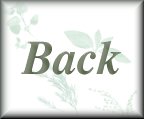

| General Information |
| Sample Formulas |
|
|
* Yarrow & Raspberry Salve |

|
A salve is basically a combination of plant materials, oils, and thickeners. Depending on the herb and the need, the thickeners can either be just that (ie. Beeswax) or provide their own properties (shea or cocoa butter, for example). Some salves have aloe gel added, and to mix water and oil, you need an emulsifier to
bind the molecules together or it will separate when it cools. It IS possible not to add them, but then you’ll have to slightly warm and shake viciously before each use to combine the mixture again. Natural emulsifiers are: Vitamin E, Vegetable Lecitin, Benzoin (a resin) tincture, Borax (a crystalline salt), Emulsifying wax (veggie derived), or Vegetable Glycerine,. Glycerine has the added benefit to be a humectant (draws water right out of the air and brings it to the skin) which is an important factor in lotion making, for example. Most mixtures also require a preservative. Choices are Vitamin E, Benzoin (a resin) tincture, or Germaben II. Here some basics: Salve: Plant material extracted in fat or thickened oil Cream: Water in oil mixture Lotion: Oil in water mixtures Always warm/melt ingredients in a double boiler and only use stainless steel or wood (if you can cleanse them sufficiently) appliances. Never use your potion making tools in cooking, or vice versa. |

| The thicker the mixture, the longer it will take to penetrate the skin, so for protective salves (i.e. diaper rash) you’d want your product a lot stiffer than say, to treat dry skin. |
|
Lip Balm 20% Beeswax 25% solid at room temperature (i.e. palm, lanolin) 15% brittle at room temperature (i.e. shea butter) 40% liquid at room temperature (i.e. your infused oils, avocado, jojoba) Salves 12 parts oil 5 parts butters (cocoa, shea, macademia) 2 parts wax 5 parts gels (aloe, glycerine) Lotions 5 parts oils 4 parts butters 1 parts wax 5 parts gels |

| Measurements: As you wish :=) The more herb the better |
Method 2: Heat the above for several hours (better: 3 days in the oven, exchanging herbs each day) on LOW. Not above 50 degrees celsius (about 75-100 fahrenheit). Of course, the long term infused oils make the best salve bases. Then add grated beeswax (1 part beeswax to 4 parts oil) and stir until melted. Spoon a tiny bit and place in freezer for two minutes, check consistency. When its right, add a little vitamin E to prevent rancidity. Olive oil does not get rancid in the first place, but my, what a lovely skin potion comfrey in jojoba oils makes!!! |

| Measurements: Combined herbs’ weight times 3 equals the amount of butter |
This particular salve is great for hemorroids and other sores. When you have more time, infuse the herbs in castor oil (needs heat/warmth, castor is rather thick) and use the infused oil as a salve base. Thicken with cocoa or shea butter. |


